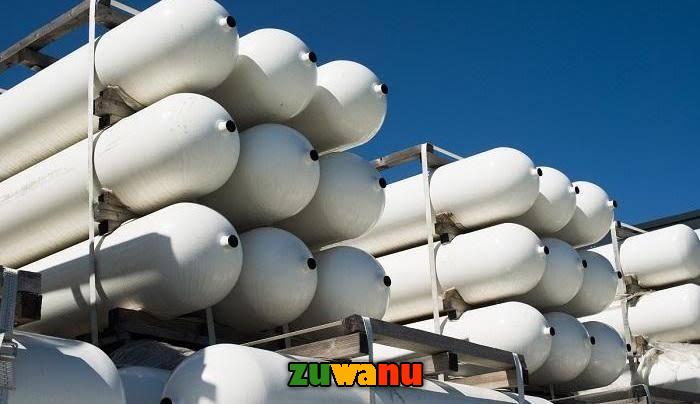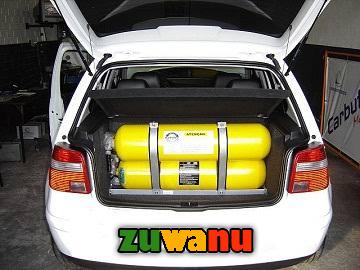Compressed natural gas (CNG)

Compressed Natural Gas (CNG): A Cleaner Fuel for a Sustainable Future
Introduction:
As the world strives to reduce its dependence on fossil fuels and curb greenhouse gas emissions, the search for cleaner and more sustainable energy sources has gained significant importance. Compressed Natural Gas (CNG) has emerged as a viable alternative, presenting an environmentally friendly option for various applications, especially in the transportation sector. In this article, we will explore the characteristics, benefits, challenges, and potential of CNG as a promising fuel for a sustainable future.
- What is Compressed Natural Gas (CNG)?
Compressed Natural Gas (CNG) is a gaseous fuel made primarily of methane, the main component of natural gas. It is produced by compressing natural gas to a pressure of around 3,600 pounds per square inch (psi), significantly reducing its volume for storage and transportation. This process enhances the energy density of natural gas, making it an efficient and viable fuel option.
- Characteristics of CNG:
One of the key characteristics of CNG is its cleaner burning nature compared to conventional fossil fuels such as gasoline and diesel. When combusted, CNG produces lower levels of harmful pollutants, including carbon dioxide (CO2), nitrogen oxides (NOx), and particulate matter. Additionally, CNG has a high octane rating, which contributes to its efficiency in internal combustion engines.
- Advantages of CNG:
a) Environmental Benefits:
CNG is considered a greener alternative to traditional fossil fuels due to its lower carbon content and reduced emissions. It has the potential to significantly decrease greenhouse gas emissions, thus mitigating climate change. The lower levels of nitrogen oxides and particulate matter also lead to improved air quality and reduced health risks in urban areas.
b) Cost-Effectiveness:
Compared to gasoline and diesel, CNG is generally more affordable. As natural gas reserves are abundant in many regions, its availability often leads to stable and cost-effective pricing. Additionally, governments in various countries provide incentives and subsidies to encourage the adoption of CNG-powered vehicles, further reducing the overall cost of ownership.
c) Energy Security:
Diversification of energy sources is crucial for enhancing energy security. CNG can be domestically produced, reducing reliance on imported oil and enhancing a nation’s energy independence. This aspect is particularly relevant for countries seeking to reduce their vulnerability to fluctuations in global oil prices.
d) Infrastructure and Distribution:
CNG infrastructure is relatively easier and less expensive to set up compared to electric vehicle charging stations or hydrogen refueling stations. The existing natural gas pipeline network can be utilized for distribution, making it more feasible for widespread adoption.
- Applications of CNG:
a) Transportation Sector:
The transportation sector accounts for a significant portion of global carbon emissions. CNG has gained popularity as a fuel for buses, trucks, and commercial fleets. Many cities have adopted CNG-powered public transportation systems, reducing emissions and contributing to cleaner air in urban areas. Additionally, CNG is also used in passenger cars, especially in countries with established CNG refueling infrastructure.
b) Industrial and Residential Use:
Apart from its application in transportation, CNG is also used in industrial processes and for residential heating and cooking. Its clean-burning properties make it an attractive option for reducing emissions in various sectors.
- Challenges and Limitations:
a) Limited Range:
One of the main challenges of CNG in the transportation sector is the limited range of CNG-powered vehicles compared to traditional gasoline or diesel vehicles. The compressed gas takes up more space than liquid fuels, leading to smaller fuel tanks and reduced driving distances.
b) Infrastructure Development:
While CNG infrastructure is relatively simpler to establish compared to other alternative fuels, its widespread adoption still requires significant investment. Expanding the refueling network to cover more areas can be a slow and costly process.
c) Methane Leakage:
Methane, the primary component of natural gas, is a potent greenhouse gas. Any leakage of CNG during production, transportation, or storage can contribute to climate change. Therefore, it is essential to address and minimize methane emissions throughout the supply chain.
d) Competing Alternatives:
As technology advances, other alternative fuels such as hydrogen and electric powertrains are gaining traction. These alternatives offer zero-emission solutions and may pose competition for CNG in certain applications.
- CNG and the Future:
Despite the challenges, CNG remains a valuable transition fuel on the path towards a more sustainable future. In regions with abundant natural gas reserves, it can play a crucial role in reducing emissions from transportation and industrial sectors while complementing the growth of renewable energy sources.
To maximize the benefits of CNG, the following strategies can be employed:
a) Encouraging Research and Development:
Investing in research and development can lead to advancements in CNG technology, addressing its limitations and improving efficiency. This includes enhancing storage solutions, increasing driving range, and reducing methane emissions.
b) Supporting Infrastructure Expansion:
Governments and private stakeholders should collaborate to invest in expanding the CNG refueling infrastructure. Building more refueling stations will encourage the adoption of CNG-powered vehicles, making it a more attractive option for consumers.
c) Promoting Sustainable Practices:
Efforts to minimize methane leakage throughout the natural gas supply chain are essential. Implementing best practices and technologies to detect and prevent leaks will contribute to maximizing the environmental benefits of CNG.
Compressed Natural Gas (CNG) is a cleaner and cost-effective alternative to conventional fossil fuels. With its potential to significantly reduce greenhouse gas emissions and improve air quality, CNG plays a vital role in the transition towards a more sustainable energy future. While it faces challenges in terms of infrastructure and competition from other alternative fuels, continued research, and strategic investments can unlock its full potential. As nations strive to achieve their climate goals and create a greener future, CNG remains a promising option in the pursuit of cleaner and more sustainable energy solutions.
Analyzing the Difference between LPG and CNG:
- Composition and Storage:
LPG, or Liquified Petroleum Gas, is a mixture of propane and butane hydrocarbons. It is stored in liquid form at a relatively low pressure, around 2 MPa (megapascals), making it suitable for portable cylinders and tanks.
CNG, or Compressed Natural Gas, is primarily composed of methane and is stored in a gaseous state at a much higher pressure, typically around 20 MPa. Due to its gaseous form, it requires specialized high-pressure storage tanks.
- Energy Content:
LPG has a higher energy content per unit volume compared to CNG. This means that for the same volume, LPG provides more energy, resulting in a longer driving range for vehicles using LPG as fuel.
- Density and Range:
CNG has a lower energy density compared to LPG due to its gaseous state, resulting in larger storage tanks and reduced driving range for CNG-powered vehicles compared to LPG-powered vehicles.
- Safety Considerations:
LPG is heavier than air and tends to settle at ground level when leaked, which may pose a fire or explosion hazard in confined spaces. CNG, being lighter than air, disperses rapidly, reducing the risk of ignition.
- Refueling Infrastructure:
LPG refueling infrastructure is more established in many countries, especially for domestic and industrial applications. CNG infrastructure, on the other hand, is commonly found in public transportation hubs and specific regions.
- Availability and Cost:
LPG is widely available and used for a variety of applications, including heating, cooking, and transportation. CNG availability may be limited to certain areas with sufficient refueling stations.
Another Name for CNG Gas:
Another common name for CNG gas is “Natural Gas Vehicle” (NGV) fuel.
Three Examples of Compressed Gas:
- Compressed Air: Compressed air is commonly used in various industrial applications, such as powering pneumatic tools and machinery.
- Nitrogen Gas: Nitrogen gas is frequently compressed and stored in tanks for applications like inerting, purging, and pressurization in various industries.
- Carbon Dioxide (CO2): Compressed carbon dioxide is used in various applications, including beverage carbonation, fire extinguishers, and as a refrigerant in certain systems.
Can CNG be Used in a Petrol Engine?

CNG can be used in a petrol engine after converting the engine to accommodate CNG fuel. This conversion typically involves adding a CNG fuel system, including a high-pressure storage tank, pressure regulator, and fuel injectors designed for CNG. The engine control unit (ECU) also needs adjustments to optimize the engine’s performance with CNG fuel. Many vehicles are available as dual-fuel vehicles, capable of running on both petrol and CNG, providing flexibility to switch between fuels.
Why CNG is Better than Petrol?
- Environmental Benefits:
CNG produces significantly lower carbon dioxide emissions compared to petrol, leading to reduced greenhouse gas contributions and a positive impact on climate change mitigation. It also emits lower levels of nitrogen oxides (NOx) and particulate matter, improving air quality in urban areas.
- Cost-effectiveness:
CNG is generally cheaper than petrol, providing cost savings to consumers. Additionally, governments in many countries offer incentives and subsidies to promote CNG adoption, further reducing the cost of using CNG as a fuel.
- Domestic Production:
CNG can often be domestically produced, reducing dependence on imported oil and enhancing energy security. Utilizing local natural gas reserves can lead to increased economic benefits and reduced vulnerability to global oil price fluctuations.
- Lower Maintenance Costs:
CNG burns cleaner, resulting in less engine wear and reduced maintenance costs compared to petrol engines. Engines running on CNG tend to have longer service life and lower maintenance requirements.
- Reduced Noise Pollution:
CNG engines generally produce less noise during operation compared to petrol engines, contributing to quieter and more peaceful urban environments.
Conclusion:
Compressed Natural Gas (CNG) and Liquified Petroleum Gas (LPG) are both cleaner and more environmentally friendly alternatives to conventional fossil fuels like petrol. While they have different compositions, storage methods, and energy densities, they offer unique advantages in various applications. CNG’s lower carbon emissions, cost-effectiveness, and potential for domestic production make it an attractive option, especially for the transportation sector. As we continue to seek sustainable energy solutions, both CNG and LPG play essential roles in reducing emissions and promoting a cleaner, more sustainable future.
